Just in time for the High Holidays, a tried-and-true recipe for kreplach, the delicious meat-filled Jewish soup dumpling.
I have written before about my love for kreplach – Jewish cuisine’s triangular, meat-filled soup dumpling. A Jewish wonton, if you will. In those earlier posts, I proffered a recipe for kreplach filled with chicken – as opposed to the traditional beef – as a way of lightening up this dish, which is usually served as a first course, after all, and often followed by yet more beef.
I stand by that version of kreplach. It’s delicious and useful for folks who don’t eat red meat or, at least, don’t want to eat that much red meat. However, it is time for me to share a recipe for the real thing: a classic beef-filled kreplach, like the kind my grandmother made for the High Holidays and that the whole family looked forward to all year.
I tinkered with this recipe for weeks in preparation for a High Holidays cooking class I was teaching at the Chicago Botanic Garden. I tried three different recipes for the pasta dough. I experimented with multiple ways to prepare the beef filling. In the end, I finally came up with a version that satisfied my taste memory of Grandma’s kreplach yet was still accessible and straightforward enough for most home cooks. Plus, I streamlined the process with the help of some trusty kitchen appliances.
There is no denying that making kreplach is a production. But since it is well-nigh impossible to buy kreplach, even for ready money, and they are beloved by just about everyone, it is well worth it to go through the process once a year.
I highly recommend preparing the filling the day before you plan to make the kreplach to break the work up into more manageable chunks. You can also freeze uncooked kreplach, so you can make them in advance, which is helpful when you are also preparing many other dishes for a holiday meal.
Perfecting the pasta dough for the dumplings took me three tries, as I mentioned. My usual all-egg pasta dough was very yellow in color and too rich – not how I remember Grandma’s dumplings at all. But when I tried a version with no eggs – just flour and water – the dough lacked structure. I settled on a version very similar to the recipe in Arthur Schwartz’s classic book Jewish Home Cooking that uses both eggs and water to hydrate the flour.
As for the meat filling, when I was researching kreplach recipes, I saw many that called for ground beef. That didn’t seem right to me at all. I remembered shreds of beef in my grandmother’s kreplach. So I gravitated towards recipes that called for cuts of beef – usually beef chuck, which is inexpensive but has a lot of flavor – to be simmered in liquid until fork-tender and then shredded.
As it turned out, that method of simmering the beef on the stove gave me the taste and texture I was looking for and it wasn’t an intimidating amount of work. While admittedly, it takes a long time to cook the meat until it is tender enough to shred, most of that time is passive, so you can go about your business while the meat simmers away.
Once you have dough and filling, the next step is to fill the dumplings. First, you have to roll out your pasta dough. It used to be a point of pride for Jewish housewives to roll their dough as thin as possible without tearing it. But if you have a pasta roller – either the kind that clamps onto the side of the counter or, better yet, a pasta roller attachment for your stand mixer – this step is a piece of cake. You can, of course, use a rolling pin, but it takes longer and it never gets as thin as with a pasta machine.
The trick with the filling, I learned, is to drain as much liquid from it as possible. A wet filling will make your pasta dough soggy. (Don’t discard the liquid the meat was cooked in though – once the fat is removed, it becomes a richly flavored beef broth.) Do not be tempted to overfill your dumplings either. A teaspoon of filling is plenty.
Having made kreplach several times over the last few weeks, I am very confident in this recipe and also in the worthiness of this somewhat time-consuming kitchen project. It will challenge you, especially if you do not make fresh pasta often – or ever – but stick with it.
Even if your first attempts at kreplach come out looking funny, as they might, they will still taste delicious and your friends and family will still gobble them up. And if you decide that making kreplach should be an annual tradition, you’ll eventually get the technique down, like a real balaboosta.
So, who is going to give it a try this year?
Ingredients
- 2 TB vegetable oil
- 1 lb. beef chuck
- 2 onions, sliced
- 2 ribs celery
- 2 carrots
- Salt and pepper to taste
- 2 cups all-purpose flour
- 2 eggs
- 1/4 cup water
Instructions
- To make the beef filling, heat the oil in a large deep skillet or sauté pan over medium-high heat. Season the beef on both sides with salt and pepper. Add the beef to the pan and sear on both sides until browned, about 2 minutes per side. Remove to a plate
- Add the onions to the skillet and sauté until softened, about 10 minutes. Return the beef to the pan and add the celery and carrots. Add about 2 cups of water to the pan - the meat should be mostly covered by the water but not submerged. Bring mixture to a boil, then reduce heat to a simmer and cover. Simmer beef, covered, until it is fork-tender, about two hours.
- Drain the solids, reserving the liquid for another use. Discard the celery and carrots. Shred the beef with a fork or transfer the beef and onions to a food processor and process until shredded but do not turn the filling into a paste. Season with salt and pepper. Place the filling in a strainer set over a bowl and allow any extra liquid to drain. (May be done in advance.)
- To make the pasta dough, combine the flour and eggs and water in a food processor and pulse to combine.
- Transfer the dough to a lightly floured board and begin to knead. The dough should hold together and not feel dry, but not feel sticky either. If it is dry, add more water, just a small amount at a time. If the dough is sticky or tacky, sprinkle the board with more flour. (Like bread, pasta dough will be different depending on how you measured the flour, the humidity in the air etc.)
- Continue kneading the dough until it is smooth and elastic, about 8-10 minutes. Wrap the dough in plastic and let it relax for 30 minutes to one hour.
- Divide the pasta dough into four parts. Keep the parts that you are not using covered to prevent them from drying out.
- Using a pasta machine, a pasta-rolling attachment for a standing mixer, or a rolling pin, roll out pasta into thin sheets. Have the bowl of filling and a small dish of water handy.
- Cut the sheet of dough into 3-inch squares. Place a small amount of filling, around 1 teaspoon, in the center of the square. Very lightly dampen two adjoining sides of the square with water and then fold the square in half diagonally, pinching the edges closed tightly. If desired, join the bottom two points of the triangle and pinch closed to form a tortellini-like shape or leave them as triangles.
- Place the filled kreplach on lined baking sheets while you repeat the procedure with the remaining dough and filling. (If making in advance, you can freeze kreplach at this point until needed.)
- Bring a pot of salted water to a boil and cook the kreplach for 5 to 6 minutes. Drain well.
- Serve the kreplach in warm chicken soup.
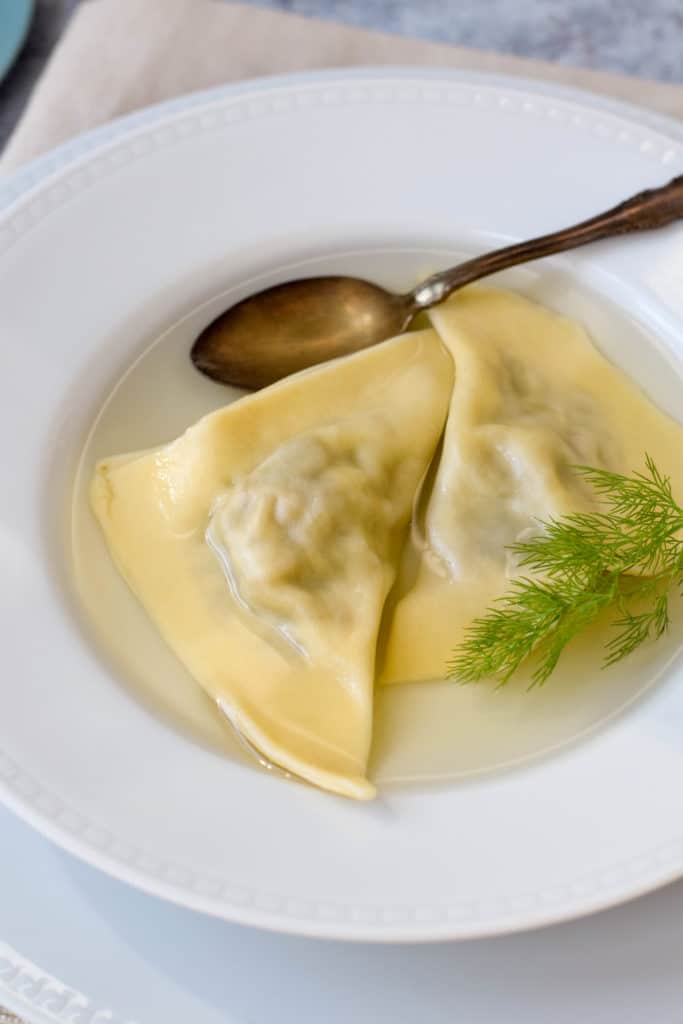
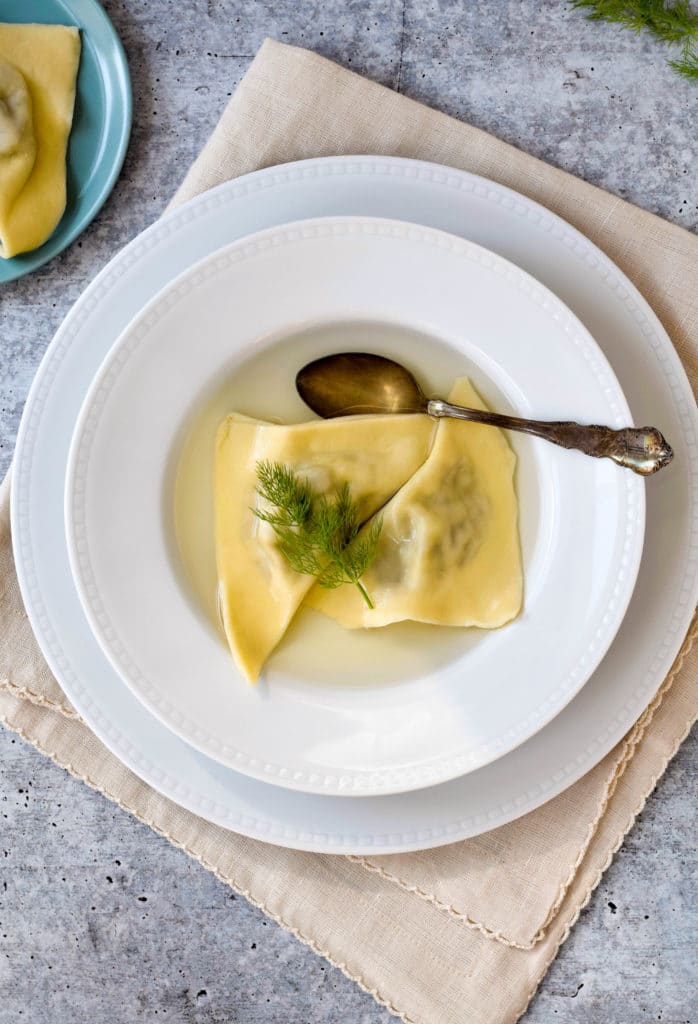
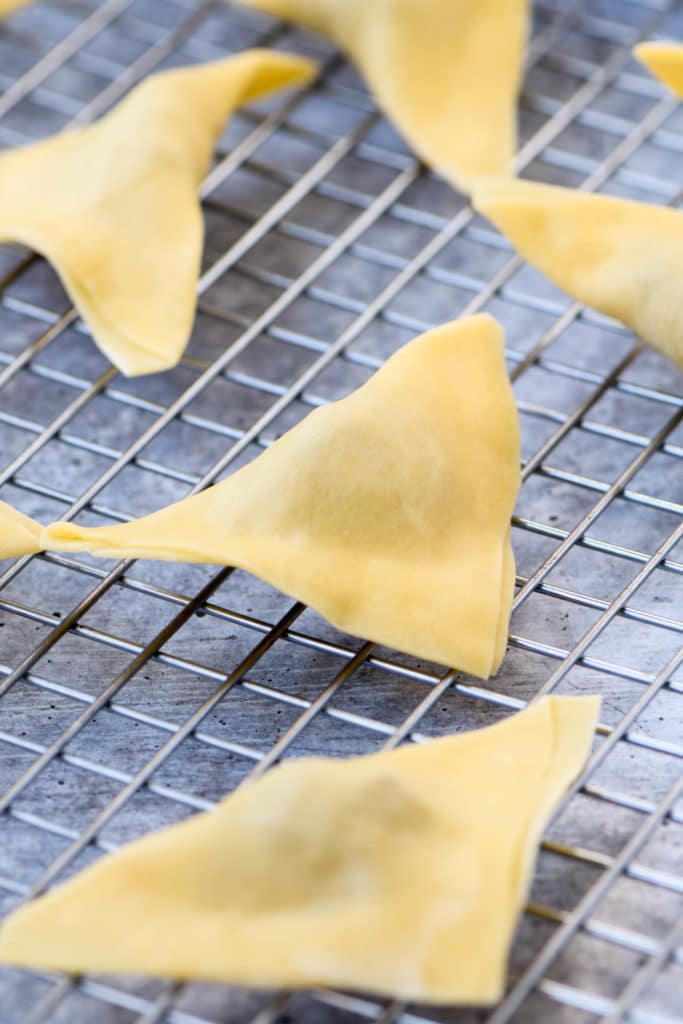
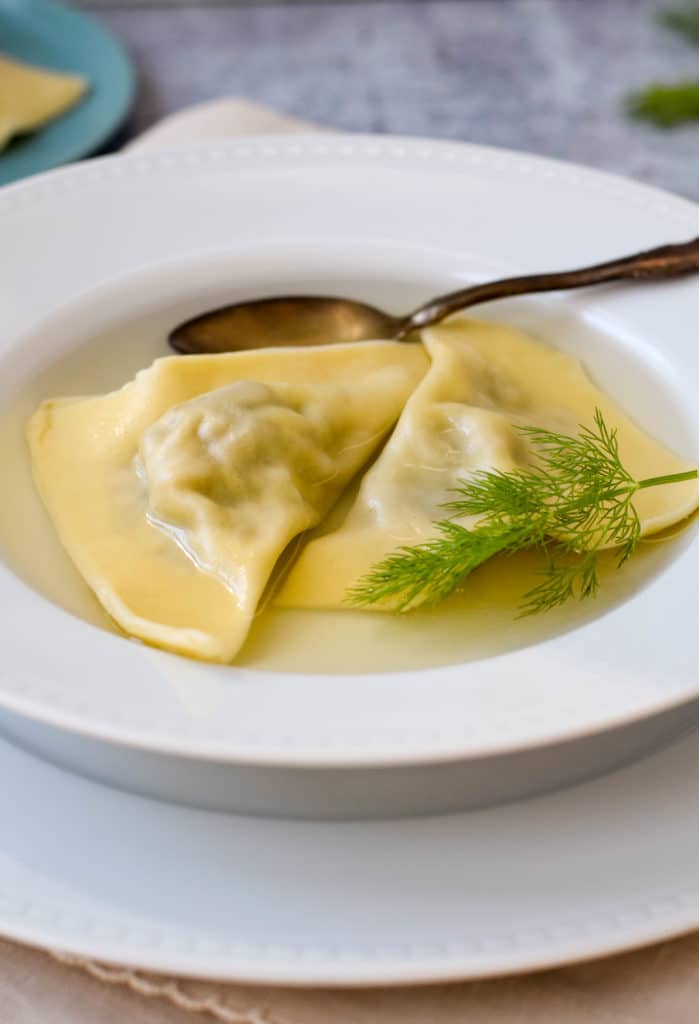
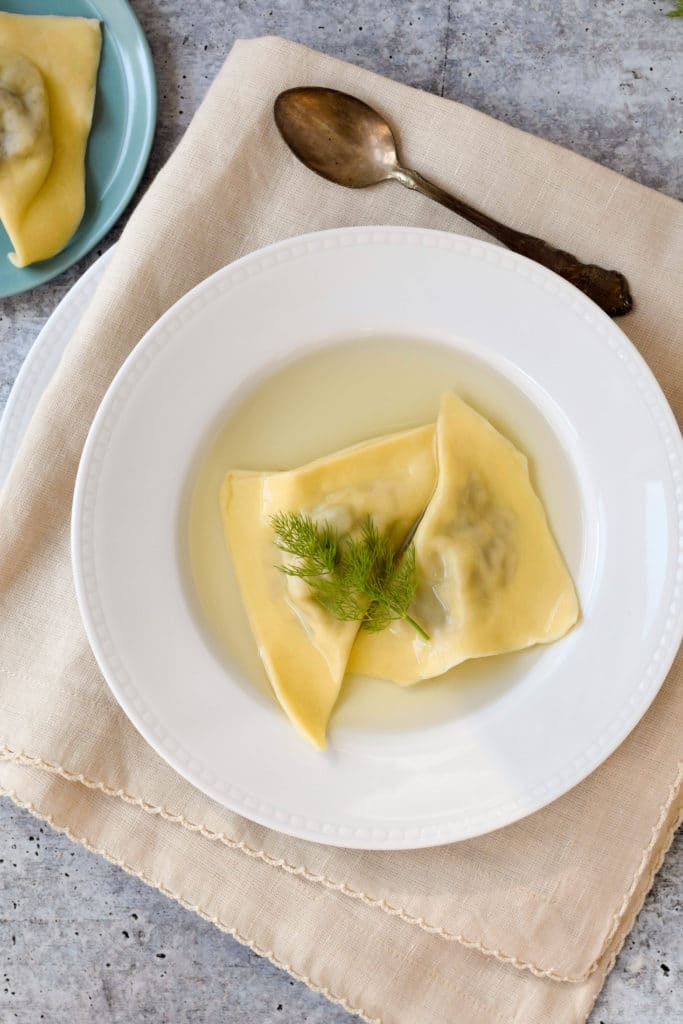
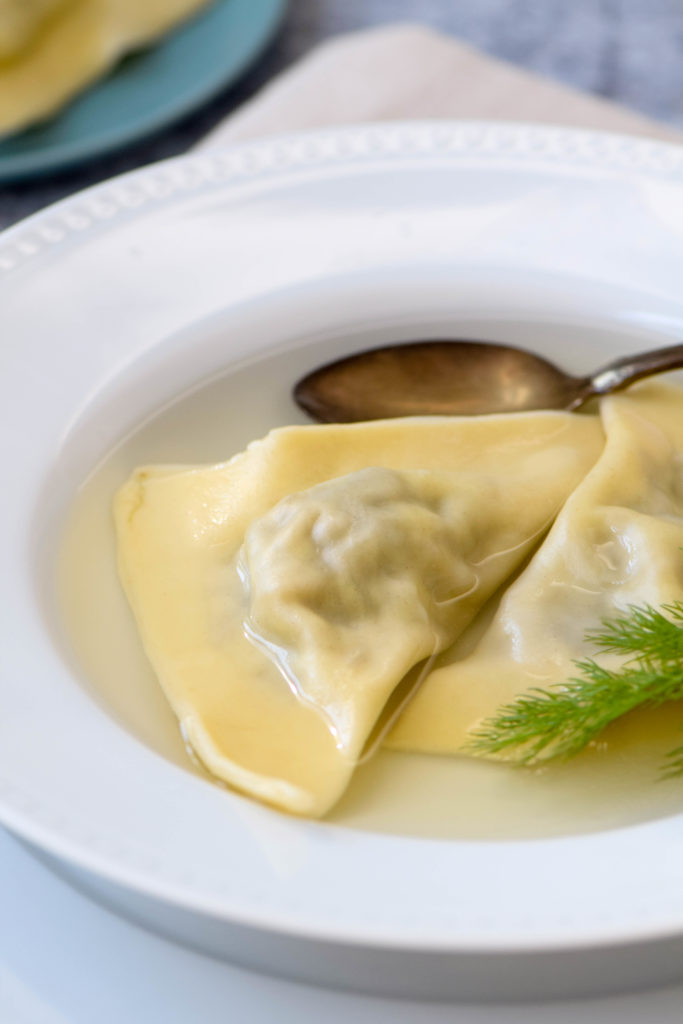

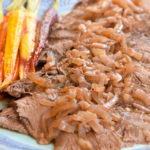
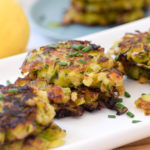


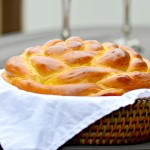
Sounds delish and reminds me of my mother’s polish dumplings. I definitely will keep this recipe in my file.
Yes! A similar type of dumpling exists throughout eastern Europe and Russia. My dad recalled having been served something that sure looked like a kreplach in Kiev. I hope you give this version a try.